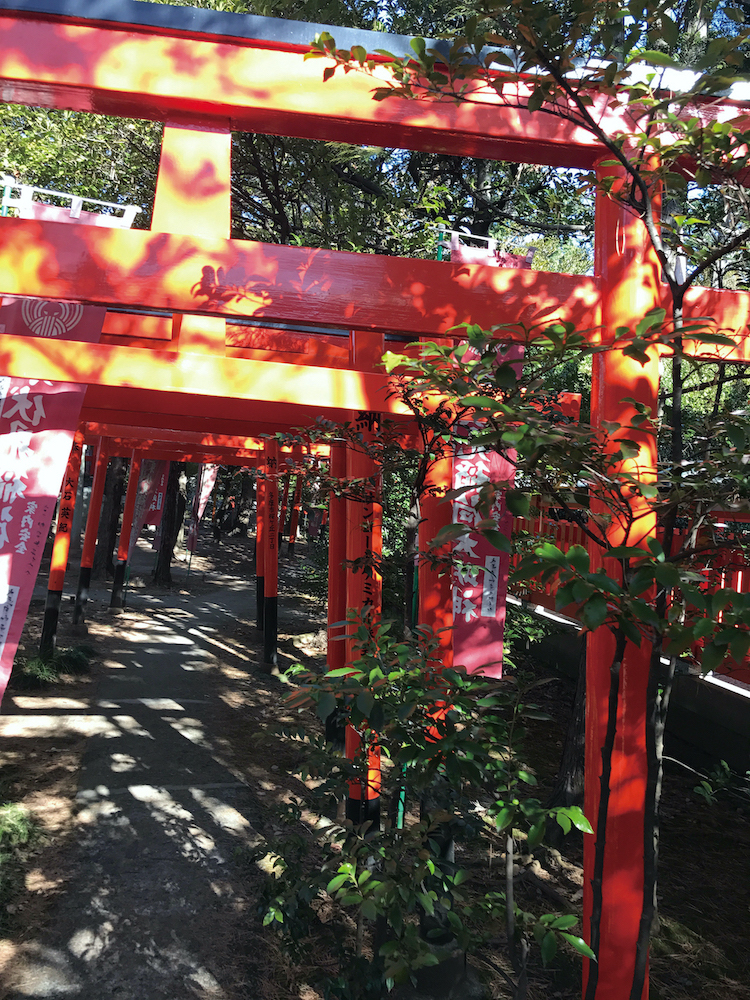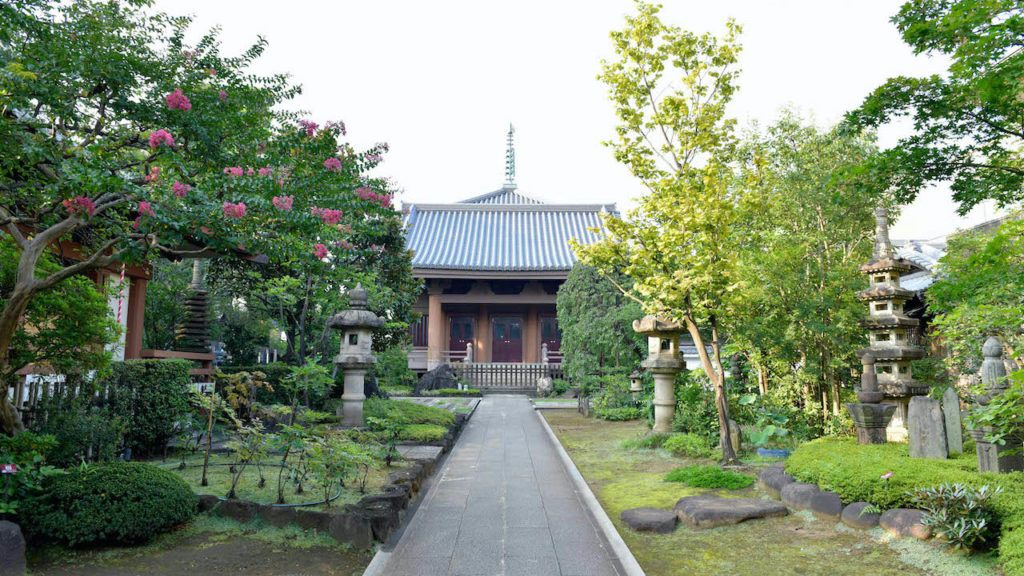Along the Seibu Line, many Japanese temples and shrines welcome visitors who come to worship and pay respect to the natural surroundings. Rich in history and culture, these places offer more than just scenic views and brilliant architecture — they offer a spiritual experience. Take a moment to find inner peace through zazen, sitting meditation, or praying for good luck at these historic settings.
- Hours
- Closed
- Admission
- Address
- Access
- Website

An innovative temple devoted to the arts
Kongo-in Temple


Kongo-in Temple, founded 500 years ago, is a Shingon Buddhist temple with astonishing gold leaf workmanship that also acts as a community space for creatives. Located near the birthplace of Japanese comics, Tokiwaso, this unique temple pays tribute to those who do the creative work, past and present, with the beloved Manga Jizo statue which holds an artist’s pen and wears robes inspired by manga panels. Following the teachings of Kobo Dashi, the temple continues to pray for peace and happiness for all.
- 1-9-2 Nagasaki, Toshima-ku, Tokyo
- Directly outside Shiinamachi Station (Ikebukuro Line)
- www.kongohin.or.jp/en/

Admire a spectacular temple garden
Nonin-ji Temple


Though the temple dates back to 1501, the garden was not created until many years later during the Momoyama period (1573 – 1603). Nonin-ji Temple’s garden skillfully incorporates the steep slope of the nearby mountain with the temple complex; in fact, it has been selected as one of the country’s top hundred Japanese gardens. The temple grounds feature a bell tower, beautiful gates and a main hall with an impressive interior. Visitors can join Zen meditation sessions every Sunday from 9am – 12pm (reservation required).
- 9am – 4pm (until 5pm during summer)
- Free (300 yen to enter the grand hall and garden)
- 1329 Hanno, Hanno-shi, Saitama
- 20-min walk from Hannō Station (Ikebukuro Line)
- noninji.net/english.test_/index.html

Energy sites effective for healing eye diseases and fulfilling parenting
Araiyakushi Baishouin Temple

As it is beneficial to cure all illnesses and fulfill various wishes, the temple has been gathering faith from many people. The principal object of worship discovered through the phenomenon of light coming out of the old plum tree in the thatched hut is an extremely rare statue of combining two Buddhas, Yakushi Nyorai and Nyoirin Kannon. Famous for working a miracle to Masako, a daughterof Hidetada, the second Shogun, during the Edo period. It is also a renowned place for the bells ringing for the New Year’s Eve, the New Year’s Visit, and cherry blossoms.
- 9am – 5pm
- Free
- 5-3-5 Arai, Nakano-ku, Tokyo
- 7-min walk from Araiyakushi-mae Station (Shinjuku Line)
- www.araiyakushi.or.jp/en

Shrine with a famous relative
Higashi Fushimi Inari-jinja Shrine


- Free
- 1-5-38 Higashi Fushimi, Nishi-Tokyo-shi, Tokyo
- 10-min walk from Higashi-Fushimi Station (Shinjuku Line)
- www.higashifushimi-inari.jp/ (Japanese)

The “cat came back” shrine for cat lovers
Azusamiten-jinja Shrine


This shrine has become a popular place to pray for the return of your cat ever since internationally renowned jazz pianist Yamashita Yosuke prayed here for his lost feline friend. Miraculously, some say, his beloved cat returned safely the next day – after being gone a full 17 days! Even before that happened, though, this place was meant to honor cats, who were seen as protectors for the silkworm industry since they are the natural predator of the rats who threatened the worms. To this day, people buy ema (wooden plaques) and hang them at the shrine to pray for their feline companions.
- 10am-12am, 1pm-3:30pm (shrine office)
- Free
- 4-1-1 Sunagawa-cho, Tachikawa-shi, Tokyo
- 15-min walk from Musashi-Sunagawa Station (Haijima Line)
- azusami-suitengu.net/ (Japanese)



